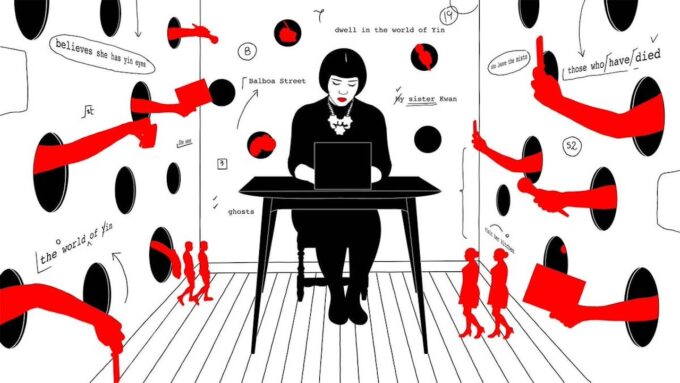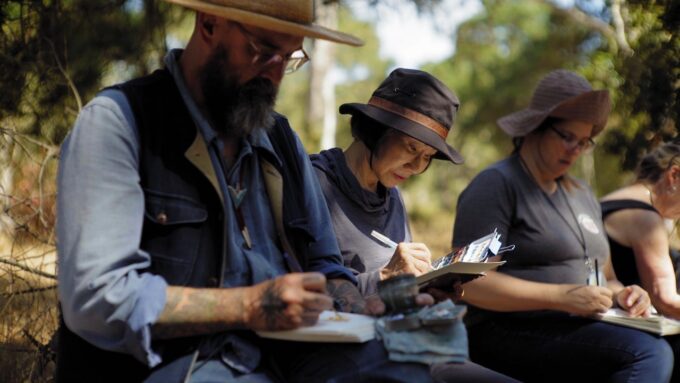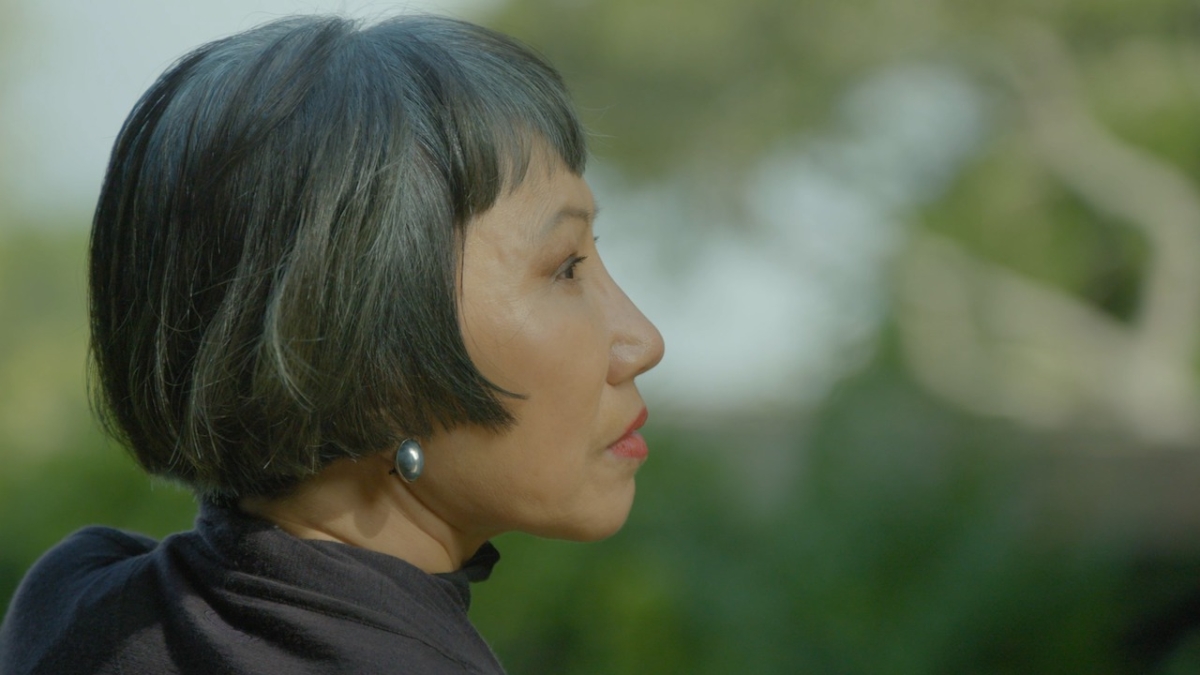Written By: Kyubin Kim
For many accomplished and aspiring Asian American writers, myself included in the latter, Amy Tan’s novel “The Joy Luck Club” was our gateway drug into the Asian American literary canon.
Published in 1989, “The Joy Luck Club” tells the stories of four Chinese American women and their mothers in San Francisco’s Chinatown as they struggle to honor tradition, respond to assimilation and preserve memory. It climbed the tops of the New York Times Bestseller list and Amy Tan quickly gained a national platform in high profile interviews. As a testament to its commercial appeal, the novel was adapted into a 1993 critically-acclaimed film directed by Wayne Wang, featuring an all-Asian cast for the first time in Hollywood.
As Amy Tan became a literary celebrity, the success of her debut “The Joy Luck Club” ignited a defining legacy for Asian American representation. To this day, it is the most commercially praised and book-clubbed novel written by an Asian American writer. At the same time, “The Joy Luck Club” is emblematic of the expectations placed on writers of color who break into the mainstream American readership. Asian American critics and readers all had their own ideas and agendas for what they wanted from the single novel that was visible to greater America. Consequently, these expectations overwhelmed the voice of the writer who wrote the story we cherished.
The late documentary filmmaker James Redford, and close friend of author Amy Tan, aimed to capture the story of a writer’s career and life that is as close to the story Tan wants to tell. Redford’s documentary “Amy Tan: Unintended Memoir” premiered virtually at the 2021 Sundance Film Festival and is part of the PBS American Masters Series.
The film opens with Tan flipping through a family photo album of when she was a child growing up in San Francisco. In a voiceover, she narrates an excerpt from her 2017 nonfiction novel “Where the Past Begins: A Writer’s Memoir”: “I am a writer compelled by a subconscious neediness to know, which is different from a need to know. The latter can be satisfied with information. The former is a perpetual state of uncertainty and a tether to the past.”
With an ethos that mirrors Tan’s reverence to the past, the documentary is loosely organized into a collection of archival photos, family videos, voiceovers and interview segments. The film is largely chronological, as Tan speaks about her parents immigrating from China and settling in California, the conception of the original “The Joy Luck Club,” and her rebellious adolescent years.
At one point, the film diverges from being a narration of Tan’s life and writing career to a secondhand excavation of her mother’s memory. This seems appropriate because much of Tan’s works involve the fraught relationship between mothers and daughters, but is even more poignant when Tan reflects on the unspoken depths of her mother’s life that affected the way she was raised. She recalls how her mother talked about being a fourth wife to a wealthy, abusive man in Shanghai, her struggles with suicidal ideation in America, and her last coherent moments with Alzheimer’s. But even while maternal inheritance is a strong theme in the documentary, Redford moves beyond framing Tan in relational terms as a daughter. Amy Tan’s selfhood stands on its own, agency still intact.
Complementing Tan’s voiceovers, sweeping graphic illustrations by Chilean artist Xaviera López help viewers reimagine language in a visual form. Here, the morphological transformations are made visible and in the now.

Of course, the documentary would not be complete without addressing the criticisms against Amy Tan by white critics and also by Asian American readers. “The Joy Luck Club” has been poked, prodded and dissected for all the ways it opens possibilities for writers of color, but also for all the ways it falls short of Asian representation in literature. The film cites past critical studies of Tan’s oeuvre with scholars critiquing how “… the chapter opens with language highly reminiscent of fortune cookie wisdom, Charlie Chan aphorisms, and the kind of Taoist precepts scattered throughout Lin Yutang’s ‘Chinatown Family’ (1948),” how “Tan inscribes Kwan with a linguistic exoticism …” and pointing out that “Tan’s success hinges on her ability to revive Orientalist tropes as if she rejects them.”
As a scholar of Asian American literature, I empathize with these critical conversations and I’ve also engaged with them myself. When analyzing Tan’s works retroactively and in light of the fluid, evolving nature of Asian American political discourse today, I can’t help but distance myself from the text and the author that came of age in the ‘80s. When a member of a marginalized group becomes successful, we expect to be represented truthfully, authentically and intentionally. But this documentary reminds us that it is impossible to expect one Chinese American woman’s truths to speak for us all.
For the first time in the documentary, we’re given Tan’s response. She opens up about her struggles with the demands of “The Joy Luck Club” and her newfound celebrity with a defensive, assertive air about her: “What they wanted really was role models. They wanted me to right the social wrongs. The social injustices. And finally, they had somebody in the limelight who should now address that and not be pandering, so to speak, to the mainstream. What they were asking me to do was to write propaganda.”
Tan doesn’t blame her critics, however. She concedes, “When you occupy a space that has rarely been occupied … Now, we’re talking 30 years ago. That is going to be placed on you naturally.”
Many of Tan’s fictional novels contain autobiographical elements. When the subject matter is so close to your own heart and representative of your personal truths, then what place does criticism have to denounce that? Amy Tan talks openly about her depressive state after the release of “The Joy Luck Club”: “Everyone expected too much and I was certain I would fail.” The documentary creates opportunities for us to empathize with Tan, especially since it is hard to imagine a white writer facing the same anxieties writing stories about white America.
Like her writing, much of the documentary feels like an intimate conversation, with the impression that the audience, if there is any, is incidental. It’s not unusual for biographical documentaries to face the problem of authorship and intrusion, where the person being documented relinquishes control of their own story and persona to the filmmaker. Here, Redford takes a backseat; he directs the film without projecting certain values upon Amy Tan the celebrity. One critic calls the documentary a “… riveting portrait of the artist …” but the film reads more like a permissive self-portrait, guided mostly by Tan’s divulgences.
What lends itself to this intimacy, especially for a woman writer who has become a household name, are the other interviewees who testify to Tan’s undeniable contributions to American literature. The film features interviews with popular contemporary fiction writers including Chilean writer Isabel Allende and “Crazy Rich Asians” author Kevin Kwan, who testify to the profound impact that Tan had on writers of color. There are interviews with Amy’s husband Lou, childhood best friend Sandy, her writing mentor Molly Giles, and Asian American female college students who gush over Amy during a book signing. Whether Amy Tan accomplishes the agenda that her readers had in mind or not, it is clear that her legacy moves not just on a political axis, but on an inspirational one.
The film ends on a surprisingly non-literary note. The camera follows Amy Tan’s quiet Sausalito home where she is flipping through a sketchbook full of bird drawings in varying stages of completion. Redford’s naturalist gaze is most fitting here; the camera is observant and not voyeuristic. Tan speaks candidly about her enjoyment of drawing birds: “The freedom to do what I enjoy had to come with no expectations and that I did it only for myself.” She points to a drawing of a colorful bird with notes on its natural habitat, on its behavior. Her handwriting is in neat cursive but she offers no answers or explanations for the camera. Amy instead advises: “You just have to observe it and be in wonder the whole time.”

James Redford’s documentary about Asian American literary legend Amy Tan is humble and subdued. All documentary filmmakers have an angle, but in this memoir, the subject retains control over her own story. “Amy Tan: Unintended Memoir” was Redford’s last film before his passing and he, too, leaves behind an imprint as a thoughtful documentary filmmaker and an activist with a life-long compassion for capturing meaningful stories.
It’s been 32 years since the publication of Amy Tan’s “The Joy Luck Club.” Since then, other Asian American writers have been making monumental strides to redefine the Western canon and many have accredited their influences to Amy Tan, including Frances Cha and Vanessa Hua. Even still, the publishing industry has been undergoing major overturns in inclusivity and equity, as marginalized writers continue to carry the weight of representation on their shoulders. This documentary is a humanizing reminder of the authors and real lives behind the fictional stories we read. Amy Tan’s unintended memoir has taught me to read between the lines, venture outside the text, and inspired me to wonder about the stories that I’d like to tell.
“Amy Tan: Unintended Memoir” is available to stream on PBS and on Netflix.

